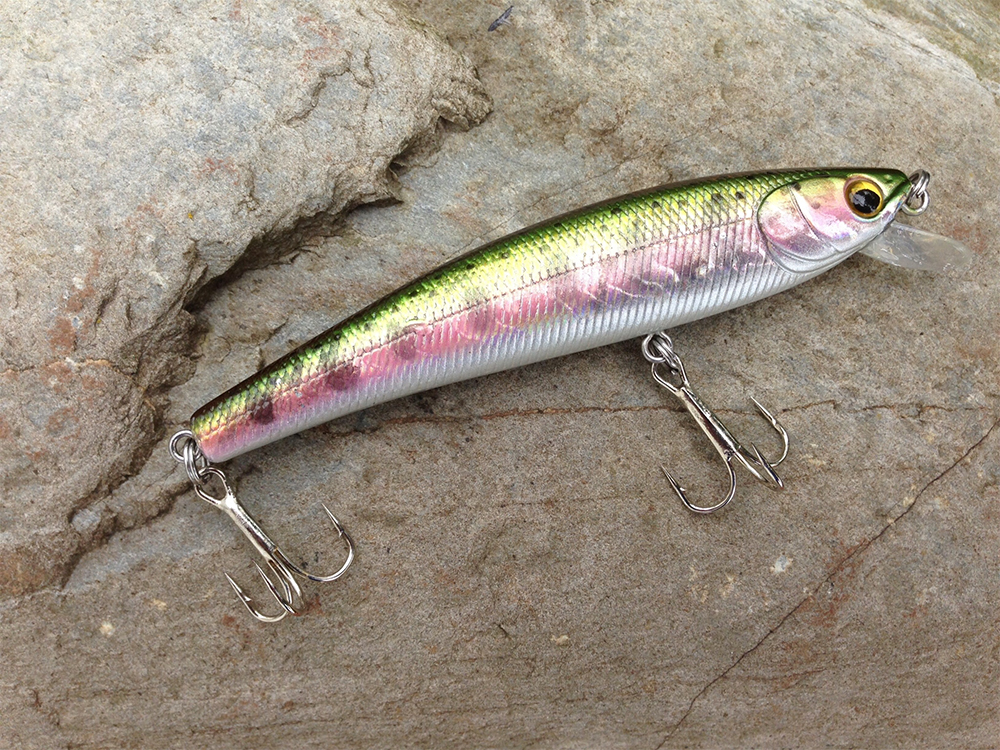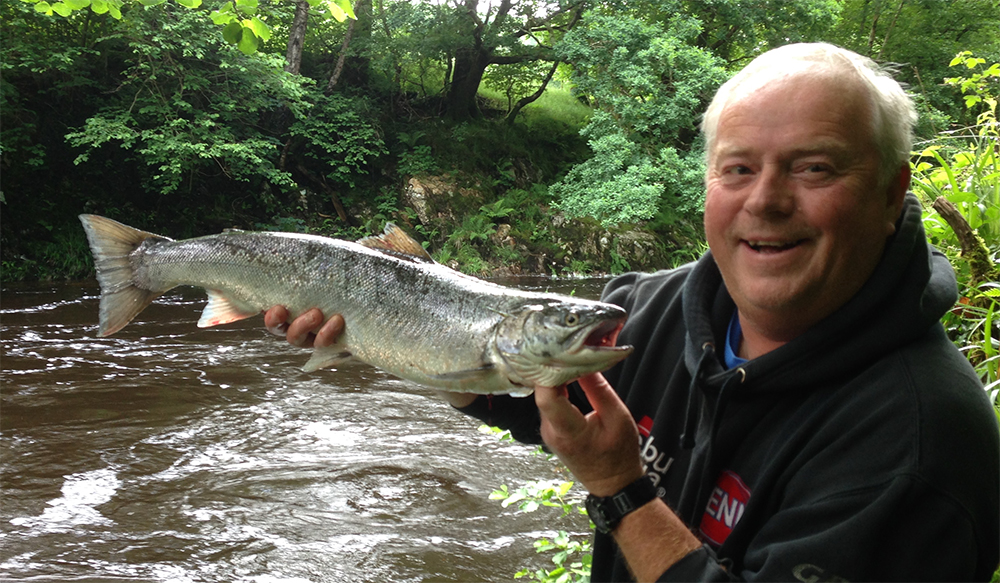The phrase “right time, right place” is never more apt than when targeting salmon. Its no good pre planning trips weeks in advance. The weather dictates when and where to go, and there is no getting round that. Rainfall is key, and the river needs to be at a certain height to get the salmon running. This requires diligent watching of the weather forecasts.
The rivers I fish are not the famous ones such as the Spey, Tweed or Tyne, my wallet simply does not run to that. I’m fishing small spate rivers, mainly in North Wales. Rainfall running through these rivers can lift the height of the river for just a few hours, then just as quickly drop off. Timing is everything!
We’d been blessed, somewhat surprisingly, with a spell of warm and fairly settled weather from the middle of May through mid June. Rainfall was minimal. I kept watching the forecasts for a hint of persistent rain. Finally, I saw indications of a short but heavy deluge of rain coming in from the southwest. It stared to rain at lunchtime, poured down until 10pm, eased for while, then poured down some more overnight, and it was still raining at 7am when I rose and looked out the window. I didn’t need to see the river. I knew it would be spot on.
I had to work that morning, but really got my skates on and got through as much as I could so I could fish the mid afternoon period. The morning dragged, and I was conscious of clock watching. Finally, it was time to go, and I was joined by regular fishing buddy Clive Griffiths!
We glanced at the river and it looked perfect. Carrying a little colour, but not running too fast. Already though, it was clearing as the water was just starting to recede. This is combat fishing along overgrown banks where casting is difficult and snags and overhanging branches a pool by pool occurrence. This is no fly water. It’s difficult enough just flicking a lure across the pool.
We fished one pool, but nothing stirred bar for a white chested Dipper that bobbed on a surface breaking rock as he eyed us with suspicion. We fought through heavy undergrowth and brambles to the next pool.
It was my turn to fish. I’d set up with what is basically bass plugging gear. An 8-foot rod, 3000 sized fixed spool reel loaded with 12lb mono. I picked out a green backed, pink sided holographic plug about 3-inches long. A diving plug that works easily in the current with a side to side action. Its holographic sides would catch the light in the slightly clearing water. I couldn’t cast properly due to overhanging branches and a backdrop of high bracken and willow trees. An abbreviated sideways flick was the best I could do. I fanned the casts right to left a little more each time covering as much water as possible.
There was a slight back eddy under some branches on the far side with a fast current between me and the eddy. I dropped the plug in to the slack water, but left the bale-arm open to allow line to spill off the spool for a few seconds, then closed the bale-arm. This would create a big bow in the line and work the plug further down, round, and across the base of the pool, which is often the holding spot for salmon.
After three casts, I felt the line tighten. For a split second, I thought the lure was snagged…then the snag moved. The fish bore off down the pool and only stopped and turned as it neared the edge of the white water. It dragged hissing line off the reel and bore off across the far side of the pool, hesitated, then went back for the bottom edge where I knew there was a big rock. I kept as much pressure on the fish as I could, but mindful to let it have line on demand.
We knew by now it was definitely a salmon and not a good sea trout, as the fish leapt clear of the water twice towards the base of the pool. It sulked now and tried to wedge itself between rocks and I felt the line go hard and jag as it buried its head under the stone. Steady pressure moved the fish and now it was off back across the pool taking all the line I’d just won. It tracked back across the pool, broached, then went deep and I started to gain line again. The fish was on my side of the bank, but I had to fight the fish with the rod pointing in to the water due to the overhanging branches. Gradually I worked it nearer and nearer. We finally saw it swirl and move out into deeper water in the centre of the pool, then it surprisingly swung back to its original position. I brought it under the branches, and as it turned on the surface, Clive netted it.
A grilse salmon we guessed would weigh about 6lbs and in perfect condition. I only had my mobile with me, but we got one quick photo on the phone, held the fish in the water, and 30 seconds later it kicked and powered off back in to the turbulent water.
Combat fishing for salmon is hard, but addictive. Everything, pretty much, is working against you, but single victories make up for the many defeats. To see a fish that has battled the oceans to return to the river it was spawned in, is an incredible experience. Salmon fishing is not solely for the privileged, it is a privilege to fish for salmon any way you can.

